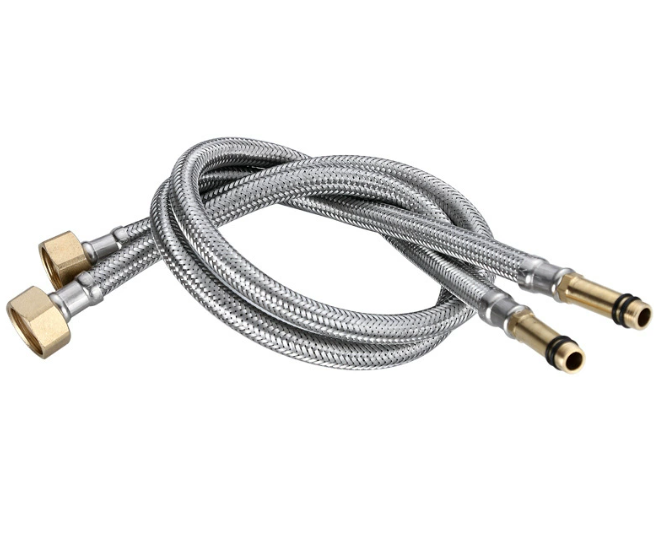Understanding the Essential Role of Shower Arms in Modern Bathrooms
A shower arm serves as a crucial component in any modern bathroom's plumbing system, connecting the water supply pipe within your wall to the showerhead. This seemingly simple piece of hardware plays a vital role in delivering a consistent and enjoyable shower experience. Beyond its basic function, a shower arm also contributes to the overall aesthetics of your bathroom while ensuring proper water flow and pressure management.
Modern shower arms come in various designs, materials, and configurations to suit different bathroom layouts and personal preferences. Whether you're renovating your bathroom or simply wanting to understand your plumbing system better, knowing the function and importance of a shower arm is essential for maintaining an efficient shower setup.
Core Components and Design Features of Shower Arms
Material Construction and Durability
Shower arms are typically manufactured using high-quality materials designed to withstand constant water exposure and pressure. The most common materials include brass, stainless steel, and chrome-plated metals. Brass shower arms offer excellent durability and corrosion resistance, while stainless steel options provide superior strength and longevity. Chrome-plated versions combine durability with aesthetic appeal, making them a popular choice for modern bathrooms.
The internal construction of a shower arm features smooth walls that minimize water resistance and prevent mineral buildup. This design aspect ensures consistent water flow and reduces the need for frequent maintenance. Quality shower arms also incorporate precise threading at both ends to ensure secure connections and prevent leaks.
Design Variations and Styles
Shower arms come in various designs to accommodate different installation requirements and aesthetic preferences. Standard straight arms extend directly from the wall, while S-shaped or gooseneck designs provide additional height and reach. Some modern shower arms feature adjustable joints that allow users to modify the angle and height of their showerhead.
The length of shower arms can vary significantly, typically ranging from 6 to 12 inches. Longer arms are particularly useful in larger shower enclosures or when the water outlet is positioned at a less-than-ideal location. The finish options available include polished chrome, brushed nickel, oil-rubbed bronze, and matte black, allowing homeowners to match their bathroom's existing fixtures and overall design theme.
Installation and Mounting Considerations
Proper Installation Techniques
Installing a shower arm requires careful attention to detail and proper technique to ensure a secure fit and prevent leaks. The process begins with applying plumber's tape to the threaded ends of the arm, which creates a watertight seal. The arm must be carefully threaded into the water supply pipe fitting in the wall, ensuring it's properly aligned and tightened to the correct torque.
Professional plumbers recommend using specialized tools and following manufacturer guidelines during installation. Over-tightening can damage the threads or the arm itself, while under-tightening may result in leaks. The shower arm should be installed at a slight downward angle to prevent water from pooling inside when not in use.
Common Installation Challenges
Several challenges can arise during shower arm installation, including alignment issues, thread compatibility problems, and proper sealing concerns. Older homes may have non-standard pipe fittings that require adapters or special consideration. Additionally, ensuring proper clearance for the showerhead while maintaining optimal height and angle can be tricky in some bathroom configurations.
To address these challenges, it's important to carefully measure and plan the installation, considering factors such as user height preferences, shower enclosure dimensions, and existing plumbing configurations. Using high-quality installation materials and taking time to properly prepare the connection points can prevent future problems.
Maintenance and Care Requirements
Regular Cleaning Protocols
Maintaining a shower arm involves regular cleaning to prevent mineral buildup and preserve its appearance. A gentle cleaning solution of vinegar and water can effectively remove calcium deposits and hard water stains. For chrome or other polished finishes, using a soft cloth and non-abrasive cleaner helps maintain the surface without causing scratches.
Regular inspection of the shower arm's connections and seals helps identify potential issues before they become serious problems. Check for signs of corrosion, loose fittings, or water leakage around the wall connection and showerhead attachment points. Addressing minor issues promptly can prevent water damage and extend the life of your shower arm.
Long-term Care Strategies
To ensure the longevity of your shower arm, implement a comprehensive maintenance strategy. This includes periodic tightening of connections, replacing worn washers or seals, and addressing any signs of wear or damage promptly. In areas with hard water, installing a water softener or filter can help prevent mineral buildup and extend the life of your bathroom fixtures.
Consider professional inspection and maintenance every few years, especially if you notice changes in water pressure or flow patterns. This preventive approach can identify potential issues before they lead to significant problems or costly repairs.
Frequently Asked Questions
How long should a shower arm last?
A quality shower arm, when properly maintained, can last 10-15 years or more. The lifespan largely depends on factors such as water quality, usage frequency, and maintenance practices. Regular cleaning and proper care can significantly extend its service life.
Can I replace a shower arm without calling a plumber?
Yes, replacing a shower arm is generally a DIY-friendly project. However, you'll need basic plumbing tools, plumber's tape, and careful attention to proper installation techniques. If you encounter any complications or are uncomfortable with the process, consulting a professional plumber is recommended.
What causes a shower arm to leak?
Common causes of shower arm leaks include worn-out seals, loose connections, improper installation, or damage to the threading. Regular inspection and maintenance of seals and connections, along with proper installation techniques, can prevent most leaking issues.


